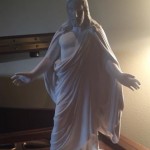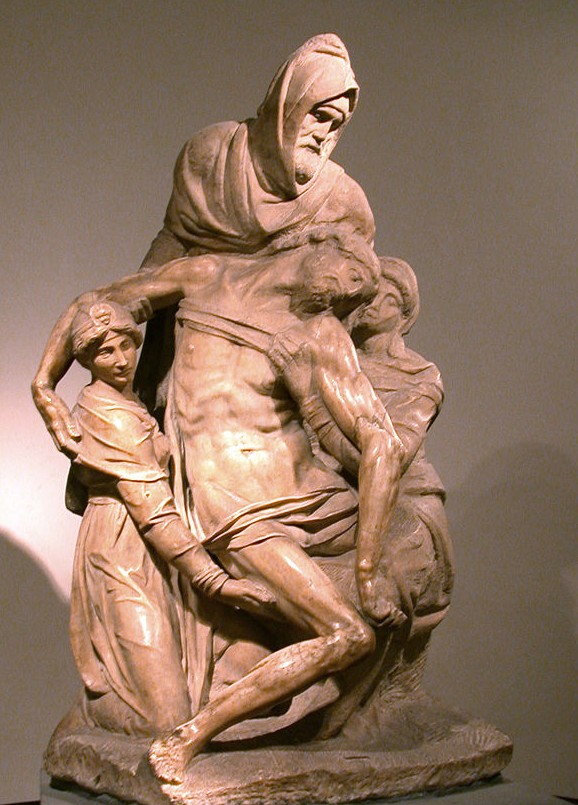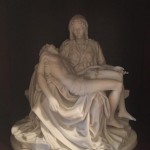Podcast: Play in new window | Download
Subscribe: Apple Podcasts | RSS
By Michael Barker
Note:
This is an expansion of a testimony I gave at my Fast and Testimony Meeting on December 7, 2014
Scripture is male-centric.
That is a fact.
It is that way because it was written by men.
History, in general, has been written by men, so it too is male-centric.
That is a fact.
As a father of two daughters, this requires me to glean the scriptures and history looking for bread-crumbs of powerful and influential women to which I can feed my daughters as examples of what they can be.
I point out to them wherever Mother in Heaven appears – whether that be Her represented as an olive tree or in the female personification of Wisdom in the Wisdom Literature of the Hebrew Bible.1 It’s unfortunate that is takes so much work, but it does.
The stories we tell and names are imbued with meaning. Meaning that goes beyond the sounds of the stories or the names.
My youngest daughter’s middle name is Marie. This is to remind her of her great-grandmother, Maria, or as we call her, “abuelita.” Abuelita was the first woman to graduate from Medical School in Guatemala. Because of the time in which she lived, she was never allowed to practice medicine as a physician.
She was also one of the early converts to the Mormon faith, south of Mexico. The name Marie, is a reminder to my eight year of her amazing abuelita.
My oldest daughter’s middle name is Noel. She was born around the Christmas season. But her middle name isn’t just to remind her of that, it is to remind her of the blessing the Christ Child is to all of us.
Names and stories have truth that go beyond words we say.
In our living room, we have two statuettes of Jesus. On the piano is the Cristus. It represents Jesus’ Godhood. It represents His majesty. It represents His conquest over sin and death. On the book shelf, is Michelangelo’s Pieta. It represents Jesus’ humanity. Jesus of Nazareth was the perfect embodiment of contradiction:
The sacred and the profane.
The consecrated and the vulgar.
The divine and the mortal.
The royal and the child born in a manger.
The life of peace which ended with violence.
Death and resurrection.
He shows us how a life of contradiction is actually a life that has wholeness, purpose, goodness, and righteousness.
As I have looked at and meditated upon the Pieta – Jesus’ limp, dead body in the arms of His mother – I have asked myself, “What was Mary feeling? What was Mary thinking?”
During this season of Advent, I have meditated upon the Annunciation of the Virgin Mary. What must it have been like, to be chosen to carry God the Son in one’s womb? What gifts can I bring to the Christ Child? What terror and wonder and feeling of blessing did the young Mary experience? These are the things, as a father of two daughters, that I meditate upon.
“ANNUNCIATION”2
BY MARIE HOWE
Even if I don’t see it again—nor ever feel it
I know it is—and that if once it hailed me
it ever does—
And so it is myself I want to turn in that direction
not as towards a place, but it was a tilting
within myself,
as one turns a mirror to flash the light to where
it isn’t—I was blinded like that—and swam
in what shone at me
only able to endure it by being no one and so
specifically myself I thought I’d die
from being loved like that.
_____
1See Proverbs 8 for example. To read more about Lady Wisdom, click here
2If you would like to hear Marie Howe give a reading of this poem, click here.
If you would like to hear the audio recording of my testimony, click below






Thanks, Michael. Very beautiful. How deeply we need Our Mother–at Christmas and always.
Wow!! You read my post. I am so happy!
The perfect embodiment of contradiction, love it. Is there contained in Christ balm for the contradictory lifestyle and mindset required of those who struggle with gender binaries in the church? Further, what about contradictions of embodiment? As paradoxical figure, how might Christ work when it comes to the “trans” identity? “Trans” = liminal = in between ?
We still need to talk about this, Kylan
Absolutely on point. Forgive me but I am going to get a little theological on you right now. Just finished an amazing course on Christian Theology in which the instructor, Dr. Willie Jennings, spent some time developing the narrative Mary. He insisted that some Christian faiths do not spend enough time understanding Mary.
Salvation began at Mary’s profound YES, at her willingness, despite her doubts. Now we can’t rob Mary of her questions and doubts because it would lessen the impact of her agency and humility.
Don’t rob Mary of her motherhood. Through Mary’s obedience to God, Christ would learn his obedience. (I’m still thinking that over in all its power.)
At this season of Advent, may we remember a young woman whose humility and life would usher in our salvation.
Amen
Here is a DEVINE FEMININE BOOK, written and published in January, 2013. It has made such an impact on the “men’s books for the past 6,000 years”, that the BYU Library purchased a copy for college class research!
God Bless America, the first nation to give equality to women – 1920 Constitutional Amendment. Merry Christmas 2014 (4th publication when the BYU purchased a copy
http://www.mormonstruth.org/page/page/1679167.htm
I am going to read this tonight as our Christmas Reading. For myself, for my besutiful daughters, but most importantly for my sons.